Music, like a secret language, weaves its magic through harmonious melodies and intricate chords. While simple triads form the foundation of music, complex chords elevate compositions, adding depth, sophistication, and color. Let’s dive into the fascinating world of complex chords!
- What Are Complex Chords?
- Complex chords transcend the simplicity of basic triads. They extend beyond the traditional root-third-fifth intervals found in major or minor triads.
- These chords incorporate additional tones—sevenths (major 7th or minor 7th), ninths (major 9th or minor 9th), elevenths (11th), or even thirteenths (major 13th).
- By introducing dissonance or tension, composers create dynamic contrasts that captivate listeners and enhance emotional connections with the music.
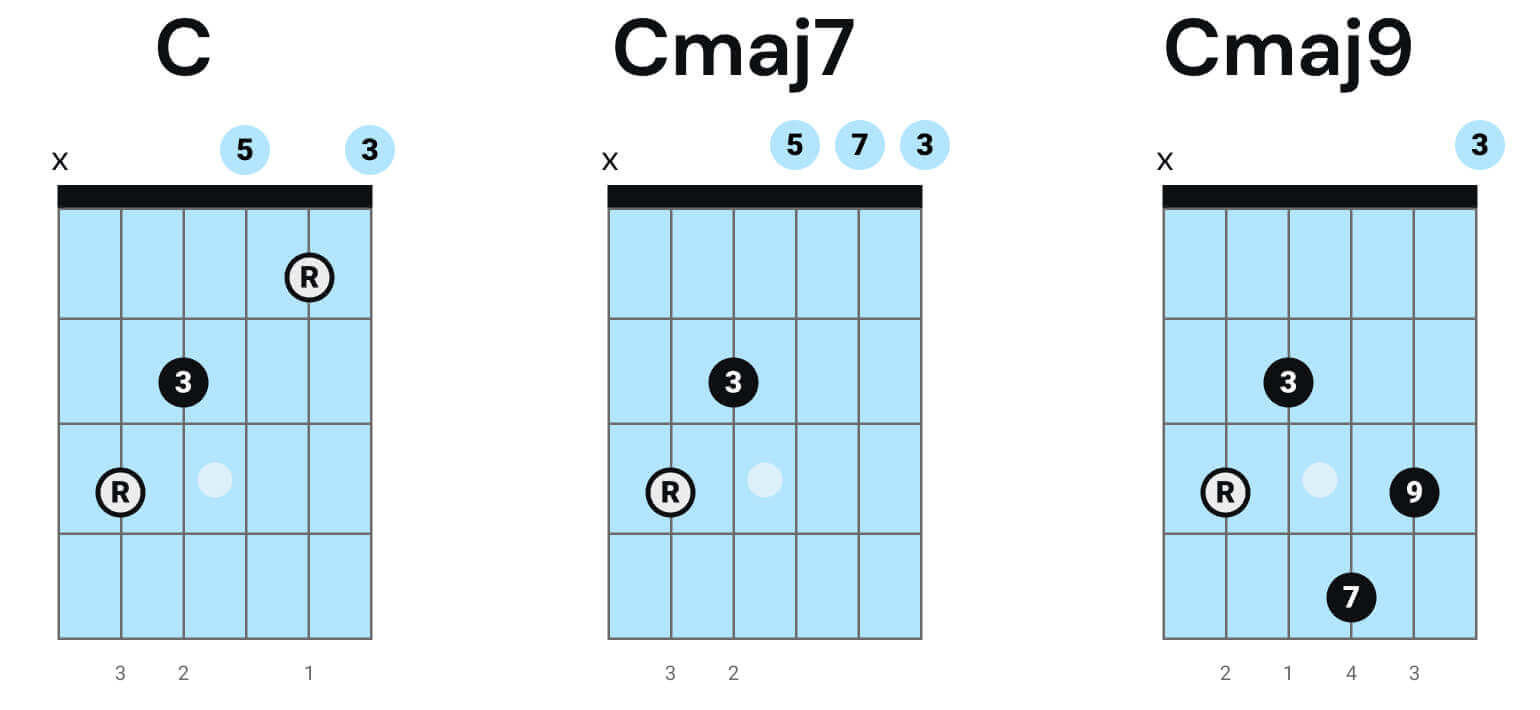
- Constructing Complex Chords
- Start with the familiar triadic structure (root, third, and fifth).
- Add intervals on top of each other using notes from the underlying scale or key.
- Example: To form a Cmaj7 chord, begin with the root note “C,” add a major third (“E”), another major third (“G”), and finally, a major seventh (“B”).
- Manipulating these intervals gives chords unique qualities—from soothing to tense.
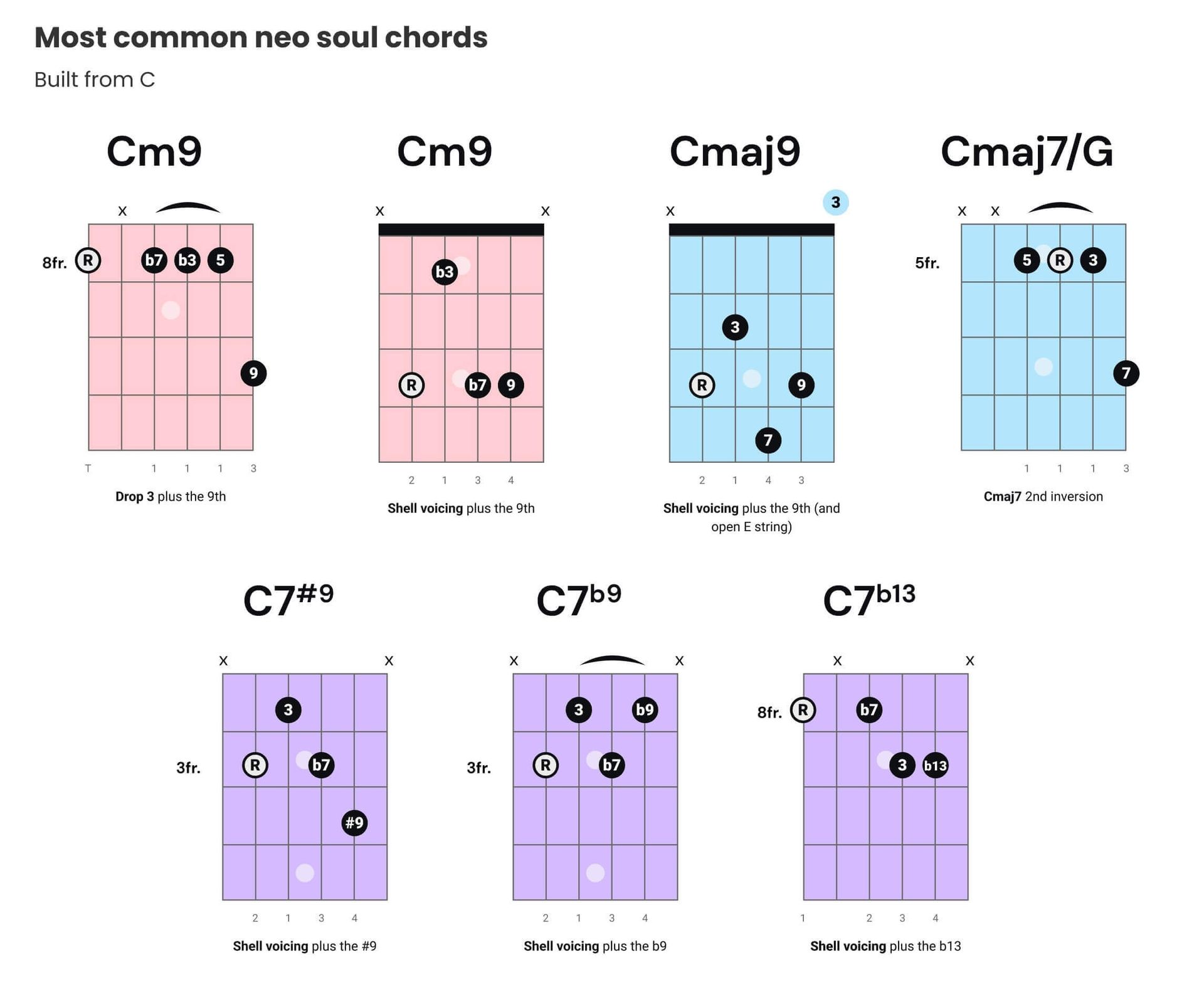
- Basic Chord Structures: Major and Minor Triads
- Major Triad: Root, major third, and perfect fifth.
- Minor Triad: Root, minor third, and perfect fifth.
- These triads lay the groundwork for complex chords.
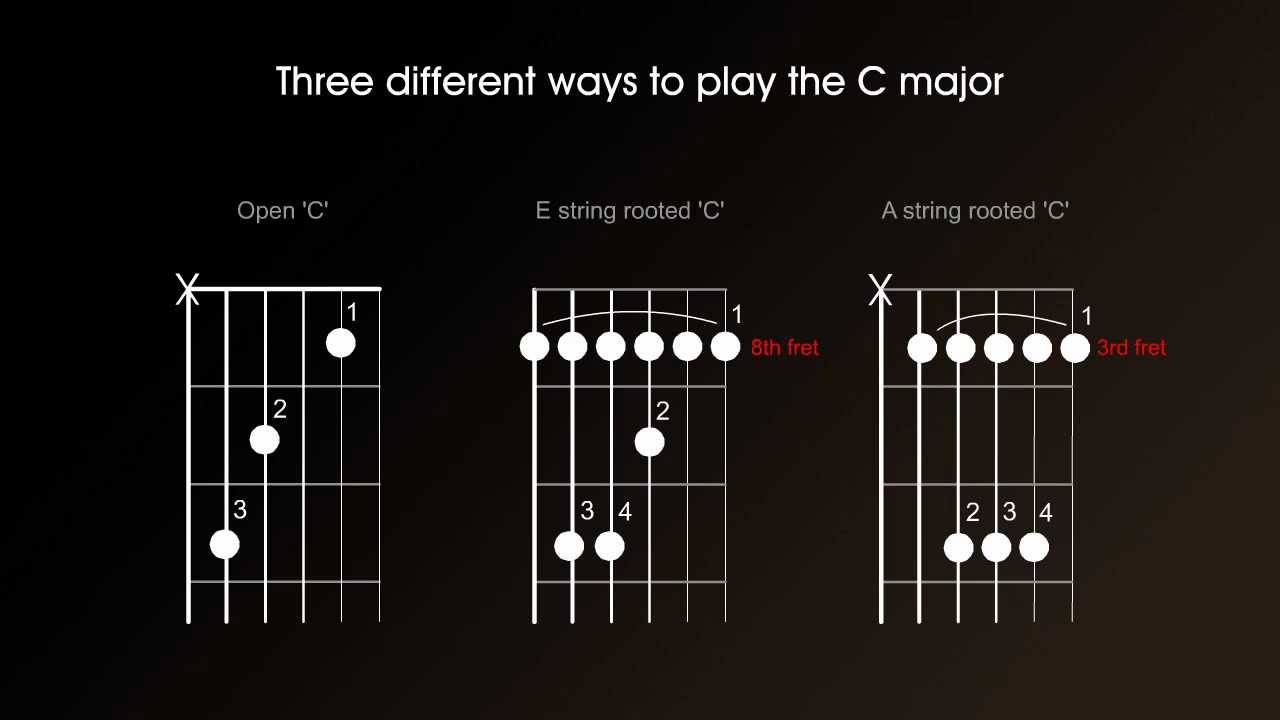
Above image shows the same triads but different voicing or positions
- Exploring Beyond Triads
- Suspended Chords: Replacing the third with a second or fourth.
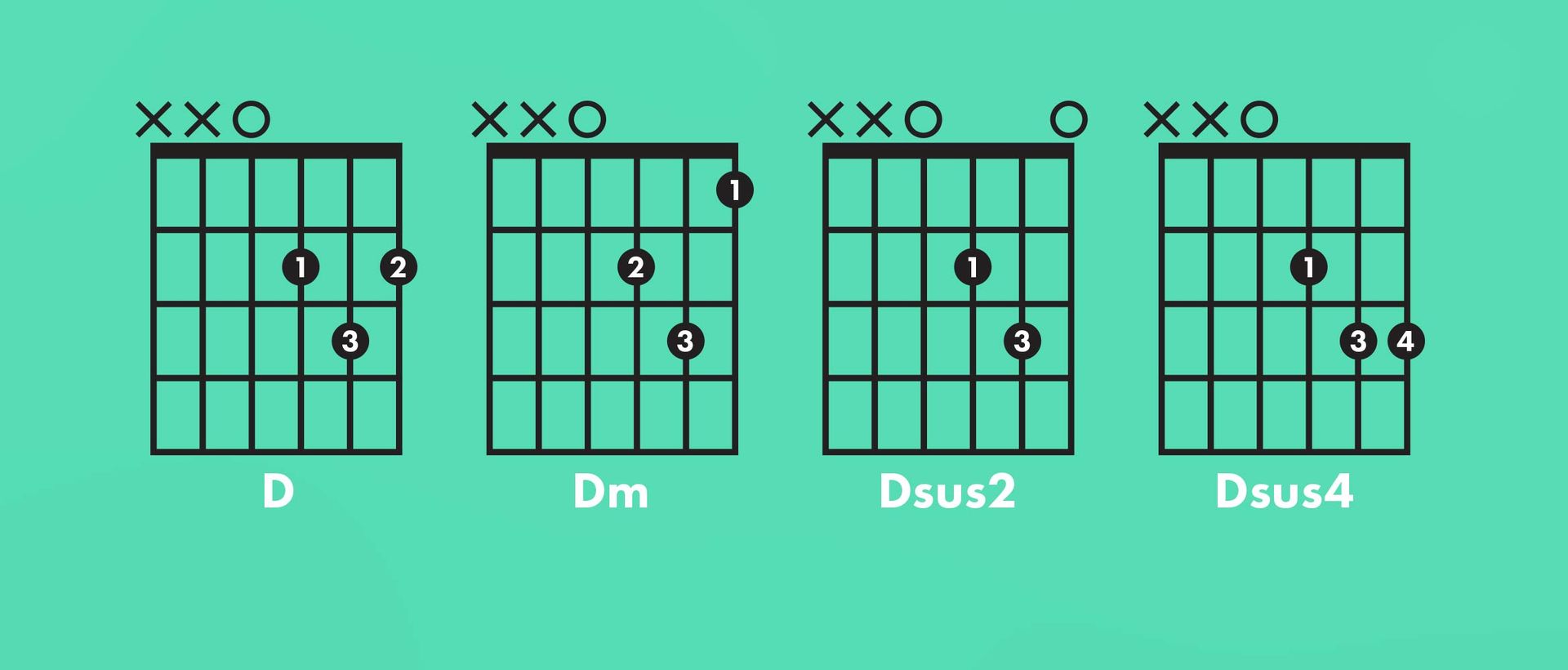
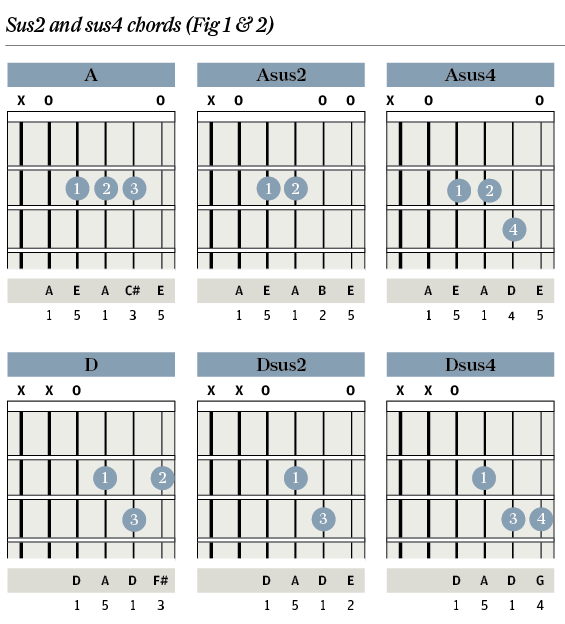
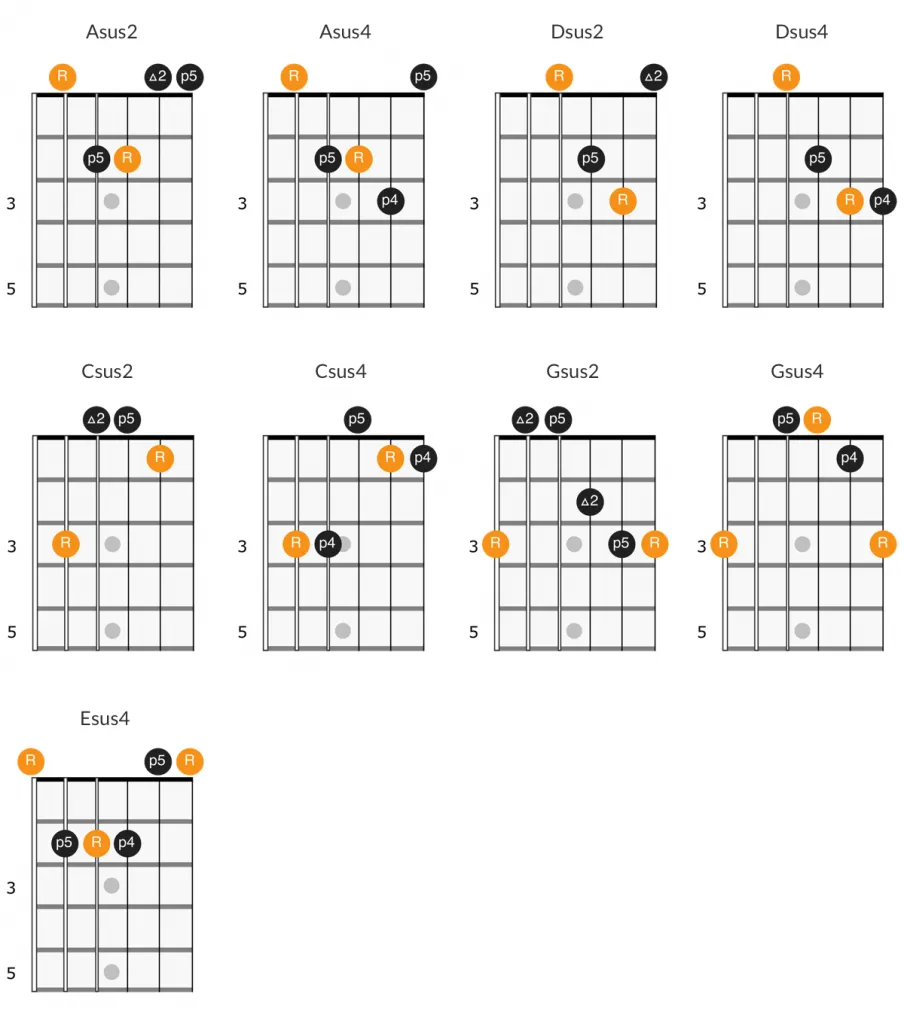
Diminished chords on the guitar can add a unique flavor to your playing, creating tension and a sense of mystery in your music. A diminished chord consists of a root note, a minor third (three semitones above the root), and a diminished fifth (six semitones above the root). Here are some common ways to play diminished chords on the guitar:

1. Diminished Triad (Root Position):
- Example: Cdim (C diminished)
- Fingering:
e|---3---|
B|---2---|
G|---3---|
D|---1---|
A|---x---|
E|---x---|
```
2. Diminished Seventh Chord:
- Example: Cdim7 (C diminished seventh)
- Fingering:
e|---3---|
B|---2---|
G|---3---|
D|---1---|
A|---2---|
E|---x---|
3. Diminished Inversion:
- Example: Cdim/Eb (C diminished with Eb in the bass)
- Fingering:
e|---x---|
B|---1---|
G|---0---|
D|---1---|
A|---x---|
E|---3---|
4. Diminished Barre Chord (Moveable Shape):
- Example: Cdim (Moveable shape)
- Fingering:
e|---x---|
B|---4---|
G|---5---|
D|---3---|
A|---5---|
E|---x---|
5. Diminished Arpeggio:
- Example: Cdim (Arpeggio)
- Play the notes of the diminished chord individually in a sequence, such as:
e|-------|
B|---2---|
G|---3---|
D|---1---|
A|---x---|
E|---x---|
Unleashing Creativity
- Complex chords ignite imagination, injecting tension, resolution, uniqueness, and dissonance into our auditory experiences.
- Dive into music theory courses, explore chord progressions, and let your fingers dance across the fretboard!
Remember, these are just a few examples of how to play diminished chords on the guitar. Experiment with different fingerings and inversions to find what works best for your playing style and the context of your music. Additionally, incorporate diminished chords into your chord progressions and melodies to add depth and intrigue to your compositions. Happy playing!
Remember, every chord tells a story—whether it’s a whisper or a thunderous roar.
Mastering Complex Chords: A Comprehensive Guide